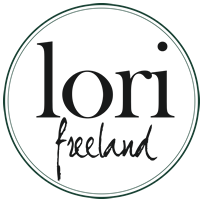
Everyone has a story worth telling. Lori loves to help authors share their messages in a way that readers enjoy and understand. She’s presented workshops at North Texas Christian Writers, Orange County Christian Writers, SoCal Christian Writers, Romance Writers of America National, Mount Hermon (where she’s led extended mentoring clinics), and taught multiple week-long clinics at West Texas Writers’ Academy. A former acquisitions editor for Armonia Publishing, former editor for The Christian Pulse, and regular contributor to Crosswalk.com and Writers in the Storm, she offers in-person and virtual workshops.
As an editor and one-on-one writing coach, her goal is to broaden and deepen an author’s storytelling and writing skills. She has experience in both mainstream and inspirational nonfiction and fiction, including children’s books, young adult, and adult contemporary and historical.
I’m always open to requested topics, but below is a list of workshops I regularly teach.
One-Hour to One-Day Workshops
Dynamic Dialogue: Make—Don’t Break—Your Scene with Dialogue
Dialogue can be the cornerstone for crafting great scenes. Or the wrecking ball that flattens a story.
Learn to use simple writing tools—punctuation, paragraphing, speaker tags and beats, timing, highlighting what isn’t said, applying the principles of action/reaction, and layering a character’s words with voice cues. And propel verbal interactions between characters into a compelling story that turns cardboard characters into real people. People your readers not only relate to, but people they’ll stick around and get to know.
Demolish Reader Stumbling Blocks Using the Secret of Clarity
Write Tight. Say What You Mean. Be Specific.
Lack of clarity on the page gives an otherwise smooth read a bumpy ride and throws up reader roadblocks. Confusion about what’s happening in a story, unmotivated character actions and reactions, unclear choreography of scene, weak or repetitive writing, and grammar and sentence-structure issues cause readers to stumble.
If we know what to watch for, we can demolish those roadblocks. Learn to use clarity to set the scene, center your characters, and manipulate sentence structure to toss unnecessary words, nix clichés and filter words, use active versus passive voice, and avoid vague words and ideas. Weaving clarity into every scene not only catches readers, but keeps them.
Frame Your Scene, Build Your Story: Use Layering to Paint a Word Picture
Our goal as writers is to put the scenes playing in our heads onto the page in a way that lets our readers experience our ideas the way we do. There’s often a gap between what we imagine and what we actually write down. A little deliberate planning can fill that gap.
Starting with something as simple as an essay-like three-part structure that sets the scene, moves the story, and hooks the reader to turn the page can lay the ground work for your frame. Knowing what you want the scene to accomplish—the information you want to share, character growth, the mood and tone, and the emotions you want to invoke in your characters and in your readers—can be a baseline for filling in that frame. Layering the scene with story-telling elements like setting, dialogue, internal thought, action, voice cues, expressions, and body language becomes the polish at the end.
Show, Don’t Tell: The Three Most Misunderstood Words in a Writer’s Vocabulary
Fiction writers hear “show, don’t tell” all the time. But why is showing so important? Is it always bad to tell? And how do you know where to show and where to tell, or even when you’re doing it right? In this practical workshop, we’ll take an abstract idea and make it concrete. You’ll have examples to take home and a chance to write some of your own. This is a hands-on, interactive workshop, where I’ll strive to keep you on the edge of your seat. Don’t like to participate? Don’t worry. Lurkers are always welcome.
The Ins and Outs of Internal Thought
What your characters don’t say is as crucial as what they do say.
Internal thought can either add depth to your story and amplify your characters or dilute your wow moments and water down your words. The goal in any novel is to make your readers feel as though they’ve stepped into your character’s body and to let them experience the world through your character’s eyes. Discover how internal thought relates to topics such as deep point of view, dialogue, subtext, tension, pacing, character likeability, character motivation, and story credibility. What goes on inside your character’s head can be a major player in creating their world. Its worth taking the time to perfect.
Master Your Manuscript: Catch and Keep Your Reader Using the Secret of Clarity
A few of us write for ourselves. Most of us write for other people. As storytellers, we want to create a mood. Set a tone. Even mold a new world. But sometimes we’re so caught up in the excitement of sharing the magic in our head we forget a reader can only experience what we’ve actually put on the page.
Writing a compelling story requires mastering the craft. But when do you use those writing rules and when do you ditch them? The backbone behind every rule comes down to a simple secret—clarity. Topics and techniques can be applied to articles, short stories, novellas, memoirs, or novels.
- Frame your scene with mood, setting, and purpose.
- Lock into deep POV using scenes that show, not tell.
- Drive tension into dialogue.
- Find your flow. Make your style work for you.
- Demolish reader stumbling blocks.
- Manipulate sentence structure and toss vague and unnecessary words.
- Battle boredom. Nix clichés, filter words, and overused descriptions.
- Plan and execute your perfect pace.
Unleash Your Story: From Ideas to Edits, Write or Remodel Your Novel
Have you always wanted to write a book and weren’t sure how to begin? Or maybe you have a manuscript that just isn’t working? Either way, this class is for you. From planning to polishing, learn how to structure a solid story, create 3D characters, build vivid visuals, set scenes with purpose, and boost your words and sentences from ordinary to extraordinary.
Click edit button to change this text.

